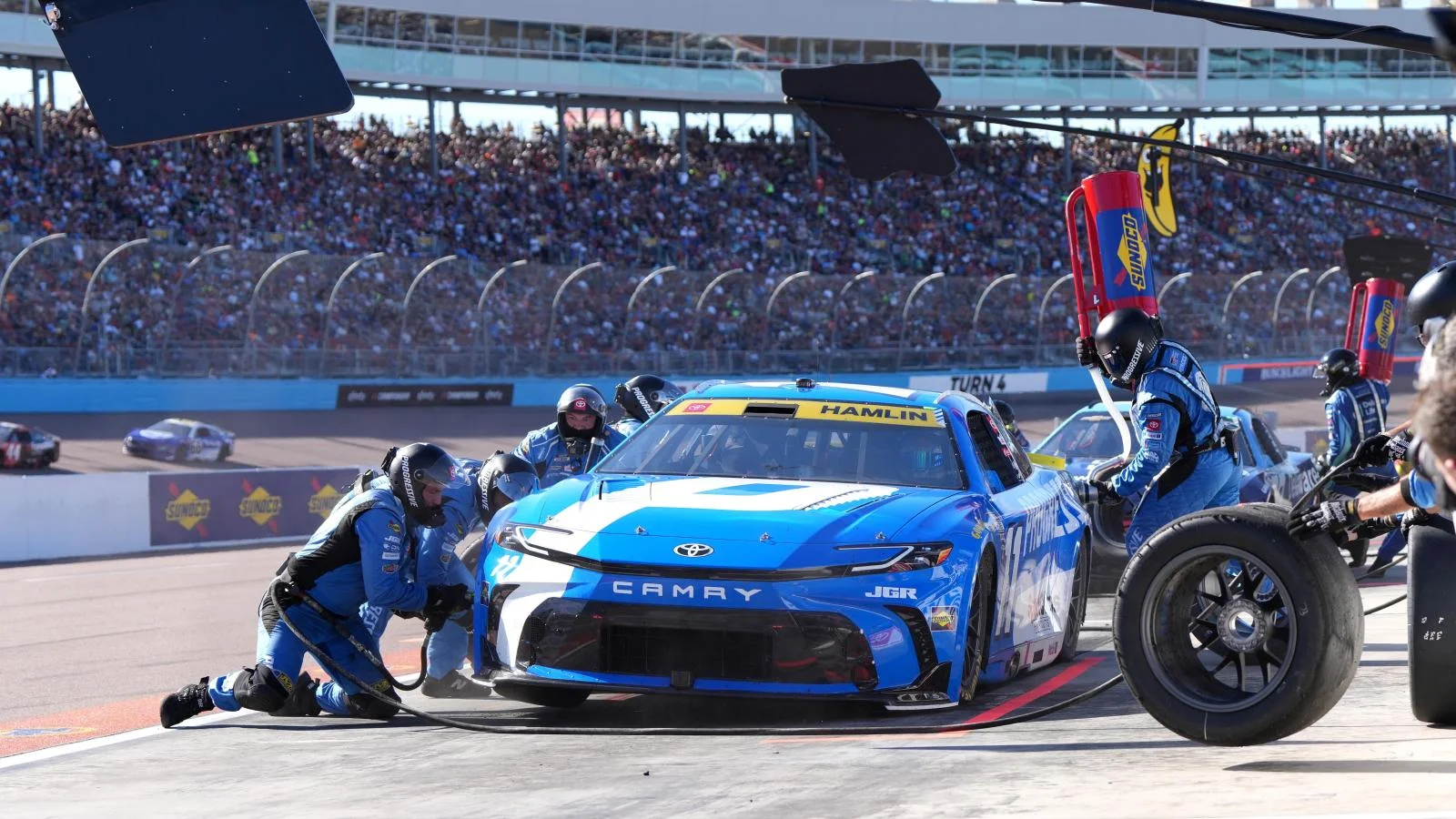At the NASCAR Cup Series finale in Phoenix, Richard Petty stepped up to support Denny Hamlin after Hamlin’s championship pursuit ended with a much-debated tire choice and a dramatic late-race shuffle. The focus keyword, Richard Petty defends Hamlin decision, was thrust into the spotlight as the racing legend analyzed the move, arguing that unforeseen traffic rather than faulty strategy cost Hamlin the title on a turbulent afternoon at Phoenix Raceway.
Hamlin’s Risky Tire Call Sparks Debate
As the closing laps ticked away at Phoenix, Denny Hamlin and the No. 11 Joe Gibbs Racing team made a decisive call for four fresh tires during the final pit stop, parting ways with the field’s consensus for two. The choice left fans and critics questioning its wisdom, especially as Hamlin saw his hopes dissolve just three laps from the checkered flag. However, Richard Petty—a seven-time champion and NASCAR’s “King”—took a different view while dissecting the strategy alongside Dale Inman.
“If he hadn’t got blocked by those couple, I mean, he would have beat the #5, not won the race. He made the right decision. Traffic just didn’t allow him to take advantage of the four tires.”
– Richard Petty
According to Petty, the events after the stop unfolded against Hamlin, not because of him. Petty called Hamlin’s drive “classic,” suggesting the driver resourcefully managed his car, especially on fresh rubber, even though pace faded over longer green runs. On that fateful restart, Hamlin found himself boxed in traffic, which neutralized his tire advantage against faster rivals.
Analyzing the Final Restart and Traffic Challenges
Reflecting on the decisive moments, Petty explained how the pit call set the stage for uncontrollable circumstances. While most drivers opted for two fresh tires, Hamlin’s attempt with four was singled out as a risk, but not a reckless one, in Petty’s eyes. He described the scenario from a racer’s perspective, highlighting a lack of clear track position that ultimately hindered Hamlin’s charge.
“When they had to make a pit stop, everybody got two tires except the #11 car, and he got four car tires,”
– Richard Petty
A key moment unfolded on the restart: the No. 11 was lined up inside, the #5 outside, and as they launched into turn one, Hamlin was within sight of the lead—but not in control. Blocked by other competitors, Hamlin’s advances were blunted.
“When NASCAR threw the green flag, the #11 was on the inside, the #5 was on the outside. When they went into the number one corner, Hamlin was beside him. Even though there were a couple of cars between them, when he got down in there, he got blocked.”
– Richard Petty
Petty’s explanation made clear that the pit call was not a simple blunder; instead, it was a calculated risk erased by the chaos of racing traffic. The Hall of Famer also credited Kyle Larson—who was among those benefitting from fortunate placement and momentum—for maximizing his opportunity as others tangled in congestion and unpredictability.
Petty and Inman Call for Rethinking NASCAR’s Rules
Turning his attention from the Phoenix result to the broader state of the sport, Richard Petty critiqued the current NASCAR structure, especially the use of overtimes that extend races past their scheduled distance, sometimes altering championship outcomes with last-minute drama. He insisted that the norms of his era, where races finished conclusively without repeated green-white-checkered attempts, should inspire today’s rulemakers.
“If you’re going to run a race, it needs to be a deal, not just somebody that’s really good on a one-lap set of tires, but that’s the way… Hopefully they’ll change it next year, and I don’t know they’re going to change that, but the point stand definitely needs to be changed.”
– Richard Petty
Petty argued that championships must reward drivers for consistent performance throughout the event rather than handing victory to whoever lucks into a strong finish during a chaotic sprint. Dale Inman, reflecting on years of collaboration with Petty and observing the sport’s evolution, added his own suggestion for managing overtime in a more structured fashion.
Inman recommended a system tailored to each track’s length and style, proposing set overtime laps—like 10 at Martinsville, five at Phoenix, and two at superspeedways like Daytona and Talladega—allowing teams fair opportunity to make key pit decisions and avoid last-minute upsets based on randomness instead of merit.
Both Petty and Inman maintained that racing should test a driver’s ability over the course, not just in a frantic one-lap shootout. Their comments reflected an undercurrent of agitation within the sport’s traditionalists, who hope that coming seasons will see rules rebalanced to honor skill, consistency, and the hard-fought journey—not just late-race luck.
The events from Phoenix, and the pointed defense made by Richard Petty, ensure that debates about strategy, fairness, and NASCAR’s direction will remain center stage heading into future championships. As drivers, crews, and officials look ahead, it’s clear that calls like Hamlin’s—and the opinions of legends like Petty—will continue to shape how the sport evolves.
